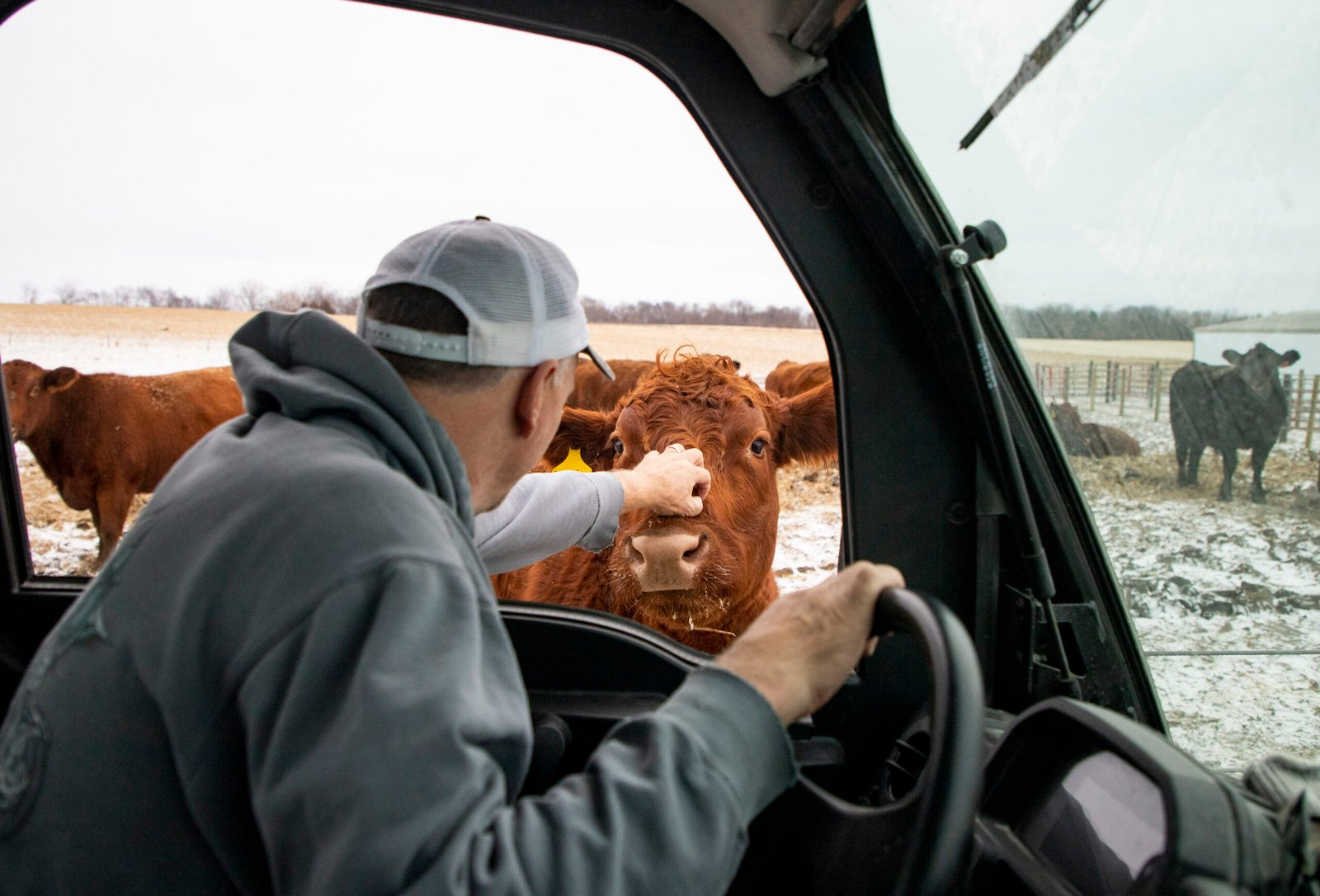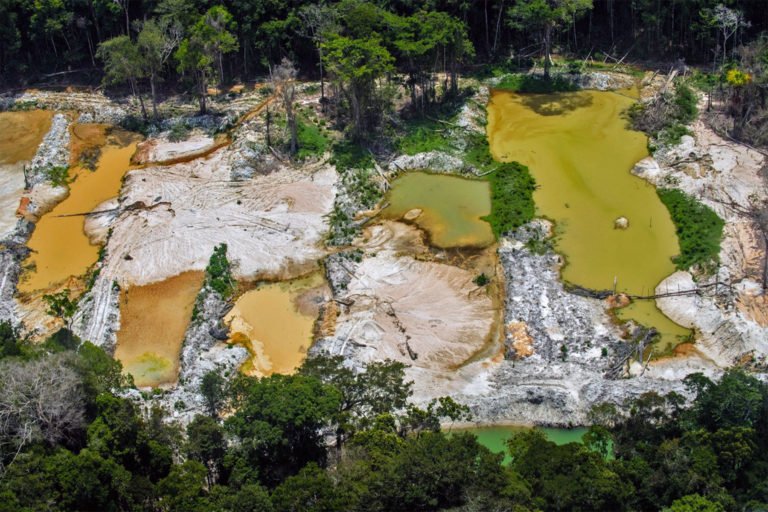Lance Lillibridge, a farmer in east central Iowa, knows farming’s ups and downs. He has been in this business since he was “knee-high to a grasshopper” and is the first of a family of farmers to own his land. But he said the sharp increase in fertilizer prices this year has put him in a challenging position.
“It’s very gut-wrenching,” he said. “It’s very difficult to be optimistic about the future because these prices are so high.”
This year’s drastic increase in fertilizer prices has hit farmers’ pockets, and many have opted to buy less fertilizer and look for other alternatives to nourish the soil.
However, fertilizer manufacturers have largely escaped unscathed: The high prices — which have soared past inflation — have cushioned their bottom lines from any decline in sales, according to financial reports.
This year, giant fertilizer companies hauled in hundreds of millions in net earnings. The rise in profits represents massive percentage increases since last year. One major producer’s earnings jumped more than 1,000% in the first nine months of 2022 than in the same time period last year.
Lillibridge’s 2,500-acre farm in Vinton, a town in Benton County, mostly grows corn, a crop that requires a lot of fertilizer compared to soybeans or wheat.
Although corn has sold at high prices over the last two years and grain is expected to remain high, Lillibridge said it’s “very frustrating as a farmer” right now. Farmers could be paying hundreds of thousands more for fertilizer, he said.
“It’s difficult to be able to pencil this out,” he said of planning the year ahead. “Right now, I can’t even get a price on fertilizer for spring. So how do I make any decisions?”
Fertilizer — which makes soil more productive — can be the difference between a good and bad harvest in many cases. Because of that, modern American row crops have become dependent on fertilizer, after generations of farming have degraded topsoil.
Runoff from fertilizer also can have disastrous downstream effects. It exacerbates the “dead zone” — an area where fish can no longer live — in the Gulf of Mexico, and it poisons drinking water.
Midwestern farmers spent nearly $4 out of every $10 of the cost of growing corn on fertilizer in 2021, according to the most recent data of the USDA’s Commodity Costs and Return. For soybeans, fertilizers account for less than $2 out of $10 of operating costs.
“The increase in fertilizer prices has probably been the number one issue” for farmers, said Nicholas Paulson, professor in agricultural economics at the University of Illinois at Urbana-Champaign.
Paulson said fertilizer use is significant for soybeans, but corn is more dependent on fertilizers — especially nitrogen fertilizer, one of the main types of fertilizer, along with phosphate and potassium.
Fertilizer prices have risen for the past two years but reached record highs last spring. Multiple factors have driven the increase.
Russia’s invasion of Ukraine (both countries are major producers), the subsequent economic sanctions and disruptions to Black Sea trade routes have further increased trade costs and uncertainty for Russian and Belarusian exports.
Prices for fertilizer have fallen since spring but remain high. While not as high as in the spring, fertilizer costs are significantly higher than a year ago and remain higher than in 2019.
This increase is considerably higher than for other prices across the economy. From the third quarter of 2019 to the same period this year, the average price of two of the most widely used types of fertilizer, diammonium phosphate (DAP) and potash, doubled in cost, according to an analysis of DTN/The Progressive Farmer fertilizer price data by Investigate Midwest. In contrast, overall inflation in that period was 20%.
But the most significant price increase over that same time period has been for anhydrous ammonia, an effective and widely used nitrogen fertilizer. The price of anhydrous ammonia fertilizer increased by 152%.
“This is not normal,” said Lillibridge, who also is a member of the board of directors for the Iowa Corn Growers Association. “In years past, we’ve had a pretty good idea what we could buy fertilizer for in the fall and what we could buy it for in the spring.”
He said that’s a burden for farmers because they have had to triple their fertilizer budget. If they had planned to invest $400,000, that means they now have to spend $1.2 million, he explained.
“I hear more of my farmer friends say, ‘I don’t even know why I do this anymore,”” Lillibridge said.
Frustrations with a concentrated market
Multiple factors influence the price of fertilizers.
The price of natural gas, which is used in nitrogen-based fertilizers production, affects the cost, as do farmers’ returns. When farmers make more money, fertilizer companies charge more, agricultural economist Carl Zulauf said.
Higher grain prices — from corn to wheat to sunflower oil — have boosted farmers’ profits to nearly $161 billion this year, up 14% from the previous year, according to U.S. Department of Agriculture estimates.
“We as farmers feel very offended that just because corn prices went up, the fertilizer prices went up,” said Dennis Friest, Iowa Corn Growers Association president, attributing price increases to a concentrated fertilizer market made up of a few giant players. “They have total control over whatever price they charge.”
Two companies supply most of North America’s potash fertilizers, while four supply 75% of U.S. nitrogen fertilizers, according to a March 2022 U.S. Department of Agriculture report.
The report even warned of concentration: “These companies’ possession of scarce resources, often in other countries, and control over critical production, transportation, and distribution channels raises heightened risks relating to concentration and competition,” it read.
Nutrien, a Canadian company formed through the January 2018 merger between PotashCorp. and Agrium, and Mosaic, based in Florida, dominate the potassium fertilizer market.
Meanwhile, the major players operating in the nitrogen fertilizer market included CF Industries, an Illinois-based company; Nutrien; Mosaic; and the Norwegian chemical company Yara.
Wes Shoemyer, a former state senator in Missouri and a corn farmer who said the high prices made him find a biological alternative to fertilizer from a company named Pivot Bio, said he thinks the Biden administration should investigate the concentrated market.
“We have to enforce the antitrust rules,” he said. “We’re seeing this administration become more aggressive on many antitrust laws.”
A year of cash flow for manufacturers
Although the rise in fertilizer prices has hurt farmers, it has led fertilizer manufacturers to record triple-digit profit increases for most of this year, according to reports that Mosaic and CF Industries filed with the U.S. Securities and Exchange Commission and the Canadian company Nutrien publishes on its website.
For example, Mosaic’s net earnings totaled $842 million in the first nine months of 2022, representing an increase in profits of 217% over the same amount of time last year. A company’s net earnings indicate how much money it made in a given period after factoring in expenses, like operating costs.
Mosaic did not return requests for comment.
CF Industries and Nutrien also saw windfalls. CF Industries reported more than $2.49 billion over the first nine months of 2022 — a 1,075% bump compared to the same amount of time last year.
When asked about its earnings, a CF industries spokesperson pointed to a post on its website. The post said prices for nitrogen fertilizer, the company’s focus, are determined by high natural gas prices.
“European natural gas prices have hit record highs in early March 2022 due to the uncertainty created by the invasion of Ukraine by Russia, which is a major supplier of natural gas to Europe” the post reads in part. “This affects prices worldwide.”
Nutrien also pointed to a post on its website explaining key drivers of fertilizer costs, including natural gas prices. The company’s president and CEO, Ken Seitz, touted his company’s high earnings in a press release: “Nutrien has delivered record earnings in 2022 due to the strength of agriculture fundamentals, higher fertilizer prices and excellent retail performance.”
In their reports, the companies mentioned that high fertilizer prices have caused farmers to buy less fertilizer. However, this drop in sales does not affect their earnings growth.
“They make excuses for price gouging,” said Joe Maxwell, president of Farm Action and former Democratic lieutenant governor of Missouri. “They have blamed high natural gas prices. They blamed hurricanes in Louisiana and Florida, and they blamed COVID. … The truth is that they’re exhibiting monopolistic practices within the marketplace.”
Investigate Midwest is an independent, nonprofit newsroom. Our mission is to serve the public interest by exposing dangerous and costly practices of influential agricultural corporations and institutions through in-depth and data-driven investigative journalism. Visit us online at www.investigatemidwest.org
Mónica Cordero is a corps member with Report for America, a national service program that places journalists into local newsrooms.
This story is a product of the Mississippi River Basin Ag & Water Desk, an editorially independent reporting network based at the University of Missouri School of Journalism in partnership with Report For America and the Society of Environmental Journalists, funded by the Walton Family Foundation.
!function(f,b,e,v,n,t,s)
{if(f.fbq)return;n=f.fbq=function(){n.callMethod?
n.callMethod.apply(n,arguments):n.queue.push(arguments)};
if(!f._fbq)f._fbq=n;n.push=n;n.loaded=!0;n.version=’2.0′;
n.queue=[];t=b.createElement(e);t.async=!0;
t.src=v;s=b.getElementsByTagName(e)[0];
s.parentNode.insertBefore(t,s)}(window, document,’script’,
‘https://connect.facebook.net/en_US/fbevents.js’);
fbq(‘init’, ‘264217957779476’);
fbq(‘track’, ‘PageView’);













